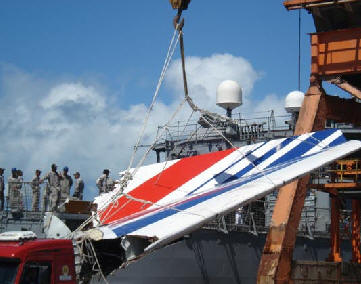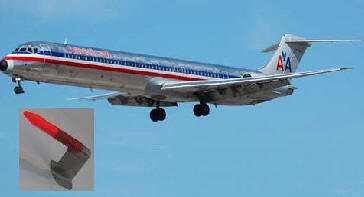 |
|
|
|
|
|
|||
|
By Mike Mitchell |
||||
 |
March 19, 2010 -
The Federal Aviation Administration on Thursday announced that it is
proposing a civil penalty on American Airlines for a maintenance
violation on a McDonnell Douglas MD-82 which involved the aircraft
pitot-static system.
The pitot-static
system is a system of pressure sensitive instruments that is most often
used in aviation to determine an aircraft's airspeed, Mach number and
altitude.
A pitot-static
system generally consists of a pitot tube, a static port, and the
pitot-static instruments. Other instruments that might be connected are
air data computers, flight data recorders, altitude encoders, cabin
pressurization controllers, and various airspeed switches.
Error readings
from a blocked pitot tube and static system can be extremely dangerous
as the information obtained such as altitude and speed is often critical
to a successful flight.
The FAA alleges
that on February 2, 2009, American Airlines' mechanics deferred
maintenance on a McDonnell Douglas MD-82 under the airline's DC-9
Minimum Equipment List (MEL) by noting that the light on the aircraft’s
annunciator panel was inoperative (“pitot stall heater light off”).
However,
maintenance personnel determined the next day that the inoperative part
was actually the captain’s pitot probe heater. Pitot probes are mounted
on the exterior surfaces of an airplane and are used in measuring
airspeed. Because they can be affected by a build-up of ice, these
devices are equipped with heaters. |
|||
| Air France Flight 447 | ||||
 |
||||
|
The airplane’s MEL allows for maintenance on the pitot probe heater to be deferred, but it restricts flights to daytime only, in Visual Meteorological Conditions (VMC). It prohibits flights into known or forecast icing or visible moisture.
Because mechanics
logged the discrepancy as an inoperative panel light, the flight crew
was unaware that the daytime VMC restrictions applied to further
flights. The aircraft was operated on five passenger revenue flights, in
violation of Federal Aviation Regulations. It is possible, given the
date, this aircraft flew through icing conditions.
"We expect full
compliance with all of our maintenance standards," said FAA
Administrator Randy Babbitt. "Safety is our top concern. Maintenance
personnel must pay attention to every detail when they are working on an
aircraft."
The FAA is
proposing a $300,000 civil penalty on American Airlines for this
incident. American Airlines has 30 days from the receipt of the FAA’s
civil penalty letter to respond to the agency. (Also see American And American Eagle To Shell Out $3.6 Million In Fines) (Also see House Aviation Subcommittee Hears Testimony On Aircraft Icing) |
| ©AvStop
Online Magazine
Contact
Us
Return To News
|
|
